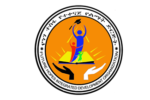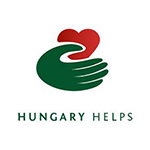Leatherworking training for the unemployed youth of Afar, Ethiopia
In a previous article, we already reported on our recent efforts to provide adequate water supply and education in various regions of Ethiopia. In recent months we rehabilitated water sources, and completed the renovation of an educational institution while also equipping it with desks, chairs, developmental games. In addition to urgent and immediate assistance, water supply and education projects, our current undertaking is focused on improving the livelihoods of unemployed youth in Ethiopia by training them in marketable vocations.
The humanitarian situation in Ethiopia deteriorated significantly in 2021, leading to increased humanitarian needs across the country, with more than 20 million people in need of humanitarian assistance and protection in 2022. Conflict in the north of the country (Tigray, Oromia), ethnic violence in other areas, and natural disasters such as flash floods and drought in the South of the country were further exacerbated by the skyrocketing food prices, resulting in an all-around dire humanitarian situation in the country.
In response to the high unemployment rate among local youth in the Afar region, HIA carried out an assessment in the target area. The survey revealed the lack of entrepreneurial know-how, employment-facilitating services and the widespread use of drugs (mainly khat) to be the main causes of the challenges the region’s youth faces. A deeper look into the region’s traditional professions shed light on the previously untapped potential of leatherworking, an old and traditional craft in the East African Highlands. Leather from the region’s animals living in their natural habitat is valued for its high density and strength, and its texture shows signs of a long and active life. At the end of the animal’s life, the sale of this by-product provides additional income for farmers. As the target market survey commissioned by HIA also confirmed the demand for leather products, the project was given the green light. By transferring traditional know-how to induce associated economic activity HIA’s plan was to improve local youth’s livelihoods and their prosperity in Afar region.

At the start of the project, HIA provided start-up capital, tools, raw material and training opportunities for the previously unemployed youth to learn the leatherworking craft and earn a livelihood. Taking two-pronged action, this combines the sustainable livelihood and vocational skills components of the project. In October, 42 unemployed young people from the Afar region successfully completed the two-month leatherwork training course. The vocational training – organised jointly by HIA and its local partner FHIDO (Future Hopes Integrated Development Organization) – was led by trainers who had themselves started their careers in a similar programme. During the training, participants in groups of 10 made leather slippers, belts and bags using materials and tools provided by the project.
From the applicants, young women and men were selected based on their disadvantaged economic and familiar status, with special attention paid to provide equal opportunities. Two of them were kind enough to talk about their experiences and what it means to them to be part of the programme. Before the vocational training, neither one of the 24-year-old participants had a job, spending most of their time idle and – despite being adults – needed the financial support of their families. So, as soon as they heard about it, they applied for the leatherworker training programme without a second thought. According to both participants, the most important thing they got from the training was the professional qualification, which enables them to take up the craft in the future, either on their own or in a group in an organised setting. This not only gives them marketable skills to support themselves, but also a perspective for their future.
It is therefore no surprise that both interviewees are open to participate in further, similar programmes that would allow them to enhance their skills and become more effective workers. They said that there is a great need for similar programs to provide vocational skills, as there are many young people in local communities without jobs and prospects who, like them, spend most of their days aimlessly in their villages or on the streets without opportunities to break out.
One participant even added that the made her experience the – previously unknown – joy of creating something that is of value to others as well. In fact, it is precisely because of this value that she is now able to support herself and her family from the revenue generated by the sale of the leather goods. The meaning behind her words is the real success of the joint programme of HIA and the Hungary Helps: through this vocational training, participants were not just simply “given fish”, they were “taught to fish”, greatly contributing to their resilience and livelihoods in their home region of Afar, Ethiopia.



